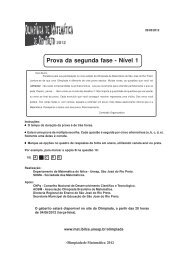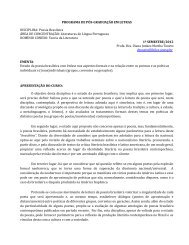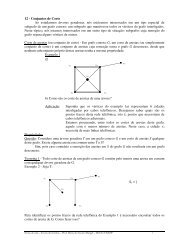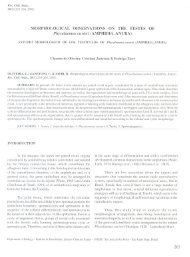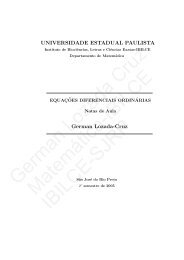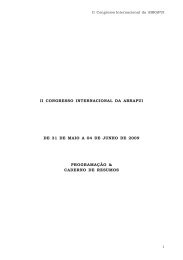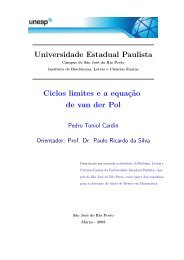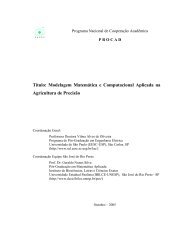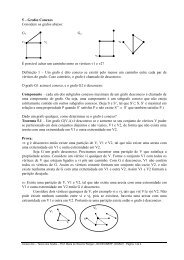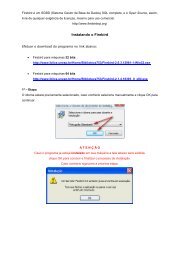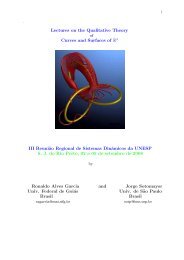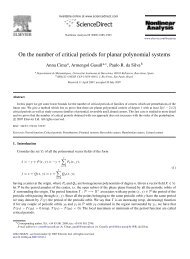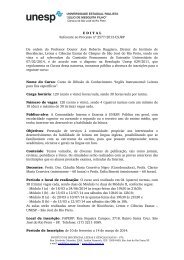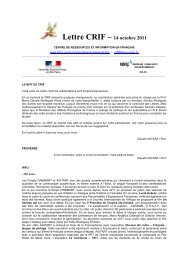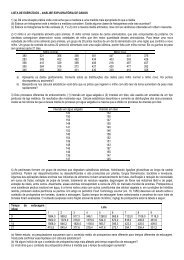Curso de Equações Diferenciais Ordinárias - Unesp
Curso de Equações Diferenciais Ordinárias - Unesp
Curso de Equações Diferenciais Ordinárias - Unesp
You also want an ePaper? Increase the reach of your titles
YUMPU automatically turns print PDFs into web optimized ePapers that Google loves.
Chamando<br />
temos que<br />
Resta calcularmos L :<br />
L =<br />
∫ ∞<br />
−∞<br />
e −s2 ds<br />
2<br />
lim Erf (t) = √ . L<br />
t→+∞ π 2 = √ L . π<br />
L 2 =<br />
=<br />
∫ +∞ ∫ +∞<br />
−∞ −∞<br />
∫ +∞ ∫ 2π<br />
0<br />
= π.<br />
0<br />
e −x2 −y 2 dxdy =<br />
e −r2 rdrdθ =<br />
e<br />
Logo<br />
Assim<br />
L = √ π<br />
lim Erf (t) = 1<br />
t→+∞<br />
(√ )<br />
π<br />
lim y (t) = lim<br />
t→+∞ t→+∞ et2 2 Erf (t) + 1 = +∞.<br />
EXERCÍCIOS:<br />
1) Desenhe um campo <strong>de</strong> direções para a equação dada e com base em<br />
uma inspeção do campo <strong>de</strong>screva como as soluções se comportam para gran<strong>de</strong>s<br />
valores <strong>de</strong> t.<br />
a)y ′ + 3y = t + e −2t<br />
b)y ′ + y = te −t + 1<br />
c)y ′ − 2y = 3e t<br />
d)y ′ + 2ty = 2te −t2<br />
e)2y ′ + y = 3t<br />
f)y ′ + y = 5 sin 2t<br />
2) Determine as soluções gerais das equações acima e use-as para <strong>de</strong>terminar<br />
como as soluções se comportam para gran<strong>de</strong>s valores <strong>de</strong> t.<br />
3) Ache a solução do PVI proposto:<br />
{ y<br />
a)<br />
′ − y = 2te 2t<br />
{<br />
y (0) = 1<br />
y<br />
b)<br />
′ + 2 t y = cos t<br />
t 2<br />
{ y (π) = 0<br />
ty<br />
c)<br />
′ + 4t 2 y = t<br />
y (−1) = 0<br />
4) Consi<strong>de</strong>re o PVI {<br />
y ′ − 1 2 y = 2 cos t<br />
y (0) = a<br />
8



